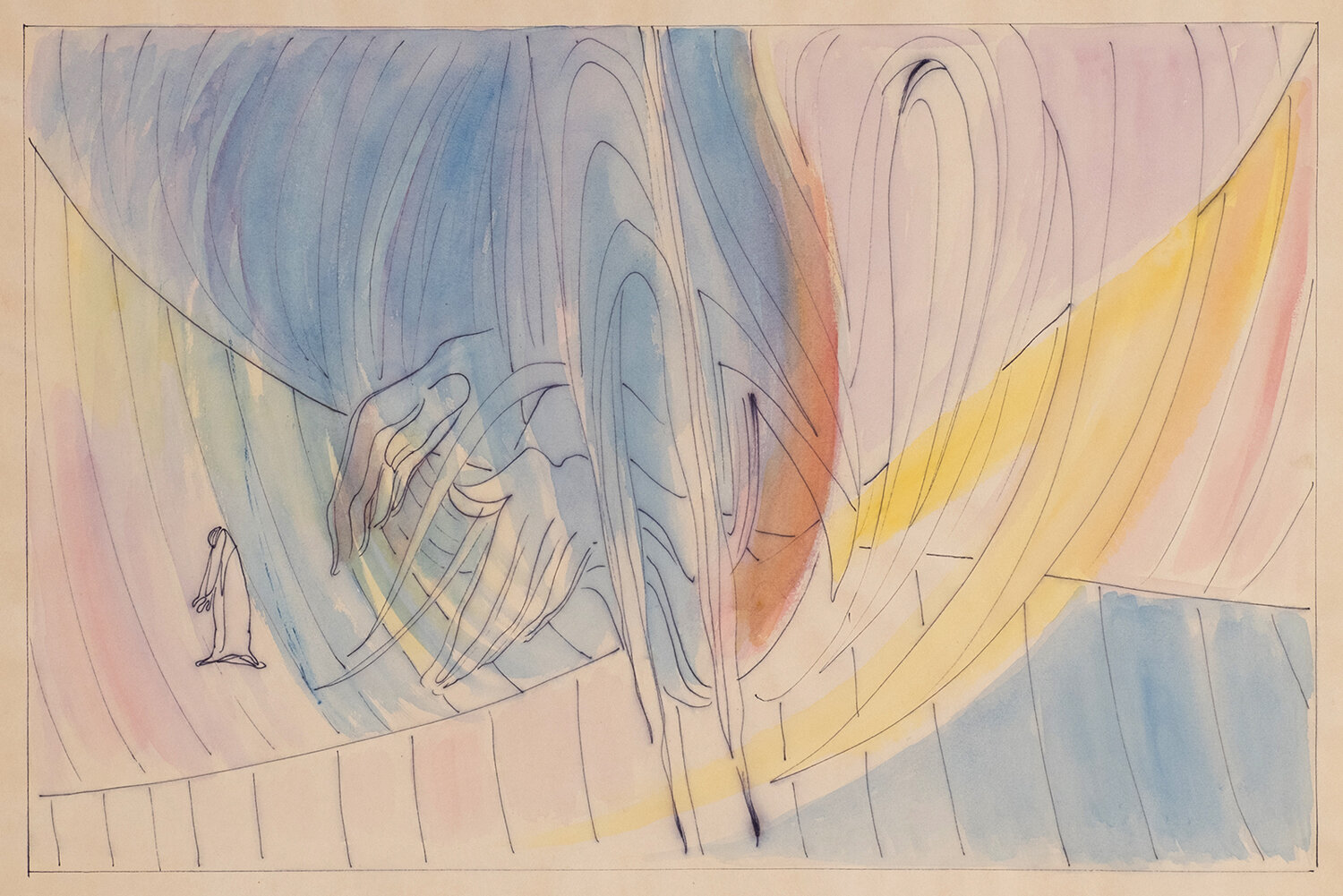Yonia Fain’s journey: A vision of the power of the human spirit
Artist Yonia Fain, reinvented himself repeatedly, yet his dedication to art remained unwavering throughout his 100 years.
Hofstra University Museum of Art welcomes fall with a look at the esteemed artist, poet, author and educator, through its new exhibit, “Yonia Fain (1913-2013): Tracing History.”
The museum’s assemblage of Fain’s art and personal ephemera offers a comprehensive view of his life and global influence, on view through Dec. 16. Fain was a member of Hofstra’s Fine Arts, Design and Art History faculty from 1971 until his retirement in 1985; he was named faculty emeritus on his 100th birthday.
Around 50 of his works — he bequeathed his archive to the museum — are on display, curated by Assistant Director of Exhibitions and Collections Kristen Dorata, including paintings, drawings, sketchbooks, and poetry.
“This exhibition is focusing on his journey, offering a vision of the human spirit,” says Museum Director Sasha Giordano. “We wanted to emphasize the aspect of being a refugee, being a displaced person having to move from place to place. The works of art that were chosen are from the many different places he traveled.”
Born in Ukraine in 1913, Fain fled Bolshevik Russia with his family to Warsaw, Poland. After the Nazi invasion in 1939, he and his first wife fled on foot to Vladivostok, Russia. There he was conscripted into the Russian army as an artist.
Refusing to create propaganda art as demanded by the Nazis and Russian authorities, Fain, with his wife, obtained falsified documents, traveling from Siberia to Japan, eventually landing in the Shanghai Ghetto for the remainder of World War II.
Fain continued to use art as a form of expression, making a living painting portraits of Japanese soldiers and their families, also writing poetry.
“Firsthand experience is key to understanding Yonia Fain’s prolific artistic oeuvre, from his early drawings in prewar Warsaw to the many paintings in New York after 1953,” Jan Burzlaff, postdoctoral associate in Holocaust Studies at Cornell University, writes in the exhibit catalogue.
He continues: “To paint is to share the experience,” Fain reflected in a testimony given to the U.S. Holocaust Memorial Museum in June 1999. "His work seeks to lend voice to all Jews who experienced Nazi rule, the vast majority of whom did not leave a trace." The exhibition allows for precisely such a window into historical experience. In the process, because his creations do not fit neatly into the two dominant categories of abstract or realist representations, they also invite a much-needed reevaluation of Holocaust and postwar art.
After the war ended, Fain set his sights on mural painting in Mexico, becoming friendly with fellow artists Diego Rivera and Rufino Tamayo. In 1953, he immigrated to the U.S.; his works featured in prominent museums. Fain also continued writing, authoring five books of Yiddish poetry and serving as the president of the Yiddish Pen Society.
“His journey speaks to those who are displaced and pushed to the margins and stripped of identity in society,” Giordano says.
Fain’s art mixes representational technique with elements of abstract expressionism, employing broad brush strokes, diagonals and dark marks.
“He really can’t be put comfortably into one style of art,” Giordano adds.
One of Fain’s prominent pieces “Occupied City, 2008,” shows an abstract landscape with overlapping buildings drawn in the background.
“It gives a sense of people living on top of each other in an enclosed space, in a trapped space, which reflects his lived experience,” Giordano notes.
Fain also used color to invoke deeper reflection. “Despite the subject matter being very traumatic, he uses a lot of bright and soft pastel colors. It plays to this dichotomy that exists in his work. He’s showing you hope, but he’s showing you despair. He’s showing you betrayal, but he’s showing you empathy."
Museum visitors can also interact with biographical material, including a timeline of the artist’s life and a video recording in which he discusses life in the Shanghai Ghetto. Additionally, everyone is invited to read Fain’s poetry and then submit a poem in response to the exhibit experience.
Fain’s extraordinary conviction to art during a time of adversity shows the enduring strength of human resilience and beckons us to explore the past.
“We should revisit history. We should re-examine these stories. We should consider people whose stories may trace a similar path of hardship today,” says Giordano.
As always, related programming enhances the viewing experience, including an exhibit tour on Oct. 23.









